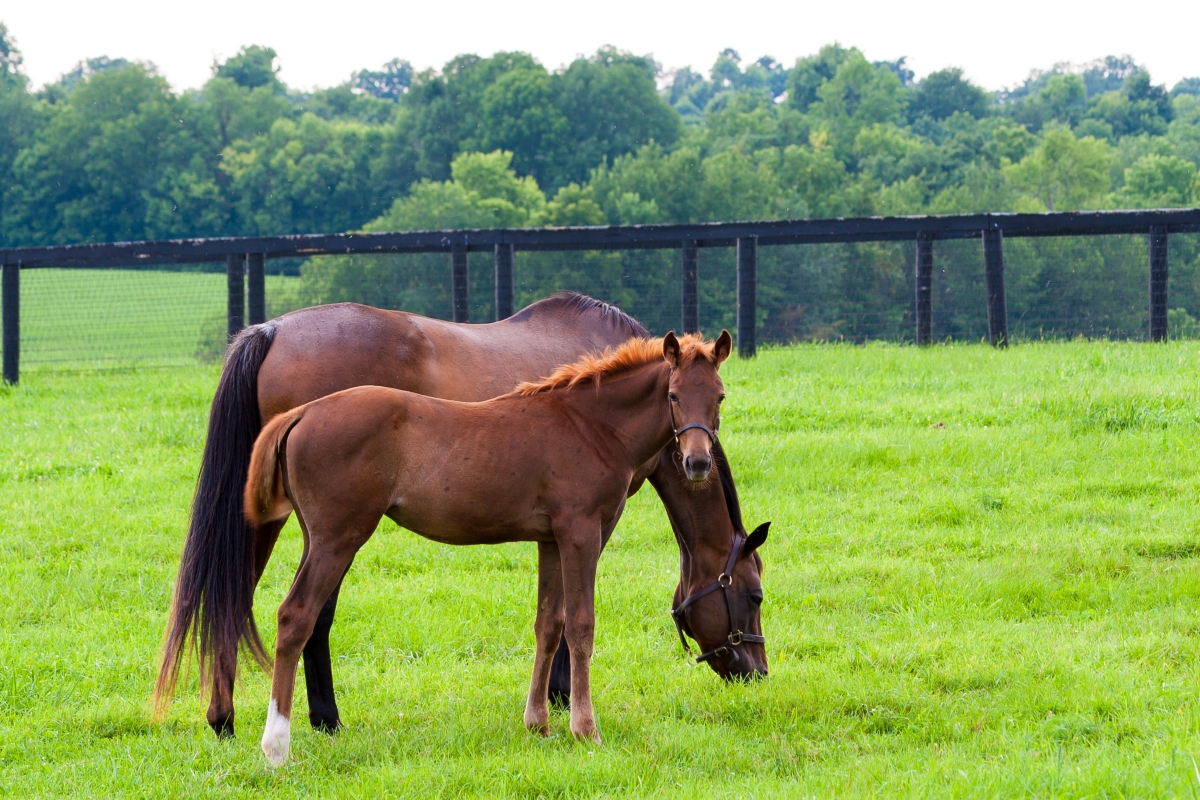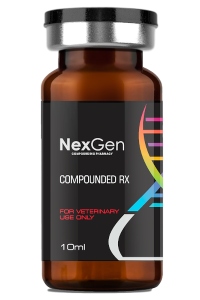The Use of Gonadotropin Releasing Hormone (GnRH) in Horses

Gonadotrophin-releasing hormone (GnRH) is a hormone produced by the hypothalamus in response to an increase in day length. As the hours of daily sunlight (or photoperiod) increase, melatonin levels subside, allowing GnRH to be produced. Production and release of GnRH is what begins the reproductive hormone "cascade" from the pituitary gland, which in turn initiates estrus in the mare, and reproductive behavior in the stallion.1
Considering the above, the importance of this hormone to horse owners, managers and veterinarians becomes clear with regard to scheduling equine breeding and certain behavioral issues that arise in light of hormonal changes that take place during this time.
Many hormones are responsible for estrus and reproduction, the most significant being luteinizing hormone (LH), follicle stimulating hormone (FSH), and gonadotropin-releasing hormone (GnRH). Short-lived GnRH is released in a pulsatile fashion from the hypothalamus and acts on the pars distalis of the pituitary gland to stimulate the synthesis and release of the gonadotropins, FSH and LH (Figure 1). Secretion of these gonadotropins into the circulation lead to changes gonadal hormone production and reproductive function.2
Figure 1: Regulation of gonadal secretion via the hypothalamic-pituitary-gonadal axis.
The Role of GnRH in Equine Reproduction
GnRH stimulates the pituitary gland to produce follicle-stimulating hormone (FSH) and luteinising hormone (LH), two very important reproductive hormones. Briefly, FSH is responsible for stimulating the development and maturation of follicles, and LH is responsible for developing the corpus luteum. In stallions, GnRH secretion has a critical role in sperm production, and also shows a seasonal effect due to its inhibition in the presence of melatonin.1
According to Peterson, chemical modification of the native short-acting GnRH molecule has led to development of long-acting, potent GnRH agonists, which have been used as a medical means of management for a number of reproductive issues and diseases of companion animals. Additionally, effective low-dose, slow-release implants containing potent GnRH agonists have been released for use in veterinary medicine in recent years. Among these are deslorelin and buserelin.
 The Significance
of GnRH in Equines
The Significance
of GnRH in Equines
Gonadotrophin-releasing hormone is vital to reproductive function in both the mare and the stallion. In addition to the functions it performs naturally, GnRH may be used in assisted reproduction for a variety of reasons. Applications include promoting the development and maturation of breedable follicles in mares, and ushering mares out of transition. It is also frequently used to induce ovulation. In stallions, GnRH has been used to increase libido, and has also been used with variable success to treat subfertility.1
Equine Breeding Products
You can find equine breeding products in our online store. Login to your account to view prices and purchase or create an account. Please note you must have a valid veterinarian license to create an account. If you do not, please forward our information to your veterinarian.
2Peterson, M., DVM. Clinical use of Gonadotropin-Releasing Hormone (GnRH) Agonists in Companion Animals: An Overview, Insights into Veterinary Endocrinology, Jan. 2015.
About NexGen Pharmaceuticals
NexGen Pharmaceuticals is an industry-leading veterinary compounding pharmacy, offering sterile and non-sterile compounding services nationwide. Unlike other veterinary compounding pharmacies, NexGen focuses on drugs that are difficult to find or are no longer available due to manufacturer discontinuance or have yet to be offered commercially for veterinary applications, but which still serve a critical need for our customers. We also specialize in wildlife pharmaceuticals, including sedatives and their antagonists, offering many unique options to serve a wide array of zoo animal and wildlife immobilization and anesthesia requirements.
Our pharmacists are also encouraged to develop strong working relationships with our veterinarians in order to better care for veterinary patients. Such relationships foster an ever-increasing knowledge base upon which pharmacists and veterinarians can draw, making both significantly more effective in their professional roles.



